| Listing 1 - 10 of 18 | << page >> |
Sort by
|
Book
ISBN: 9782804176068 2804176061 Year: 2016 Volume: *113 *47 Publisher: Louvain-la-Neuve : De Boeck Supérieur,
Abstract | Keywords | Export | Availability | Bookmark
 Loading...
Loading...Choose an application
- Reference Manager
- EndNote
- RefWorks (Direct export to RefWorks)
L’objectif est de fournir au lecteur un état de la question simple et intuitif de l’émergence et de l’expansion rapide d’une discipline complexe : le connexionnisme. Le connexionnisme a révolutionné de manière transversale de nombreuses disciplines scientifiques telles que l’intelligence artificielle, la psychologie, les neurosciences, la philosophie, la linguistique et, plus largement, les sciences cognitives. Par voie de conséquence, de nombreux étudiants, chercheurs mais aussi le grand public sont intéressés et demandeurs d’information dans ce domaine en expansion constante depuis 3 décennies. Malheureusement, les ouvrages actuels dans le domaine du connexionnisme sont trop techniques (ce qui n’intéresse que les chercheurs du domaine) et n’ont pas de recul sur la discipline en elle-même : ce qu’elle peut apporter, son évolution passée, présente ainsi que les pistes de recherches actuelles. Par ailleurs, l’essentiel des ouvrages dans le domaine sont en anglais, ce qui restreint de façon substantielle l’audience. L’objectif de cet ouvrage est donc d’apporter une réponse à ces deux aspects par une démarche de vulgarisation de cette discipline complexe.
Réseaux neuronaux (physiologie) --- Connexionnisme --- Neurosciences cognitives --- Réseaux neuronaux (informatique) --- Neural networks (Computer science) --- Neural networks (Neurobiology) --- Connectionism. --- Connectionism --- Cognitive neuroscience --- Réseaux neuronaux (Neurobiologie) --- Réseaux neuronaux (Neurobiologie) --- Connexionnisme.
Periodical
ISSN: 08936080 Publisher: Pergamon
Abstract | Keywords | Export | Availability | Bookmark
 Loading...
Loading...Choose an application
- Reference Manager
- EndNote
- RefWorks (Direct export to RefWorks)
Computer. Automation --- Neural computers --- Neural networks (Computer science) --- Neural networks (Neurobiology) --- Nervous System --- Ordinateurs neuronaux --- Réseaux neuronaux (Informatique) --- Réseaux neuronaux (Neurobiologie) --- Periodicals. --- Periodicals --- periodicals. --- Périodiques --- Nerve Net --- Reseaux neuronaux (Neurobiologie) --- Réseaux neuronaux (Informatique) --- Réseaux neuronaux (Neurobiologie) --- Périodiques. --- #TS:TELE --- Health Sciences --- Neurology --- Mathematical Sciences --- Applied Mathematics --- Health Sciences. --- Neurology. --- Périodiques --- EJINFOR EJMEDEC ELSEVIER-E EPUB-ALPHA-N EPUB-PER-FT MDNEUROL MDTECHNO --- MDNEUROL MDTECHNO --- neuronale netwerken --- Neural computers - Periodicals --- Neural networks (Computer science) - Periodicals --- Neural networks (Neurobiology) - Periodicals --- Nerve Net - Periodicals --- Nervous System - periodicals --- Ordinateurs neuronaux - Periodiques --- Réseaux neuronaux (Informatique) - Périodiques --- Reseaux neuronaux (Neurobiologie) - Periodiques
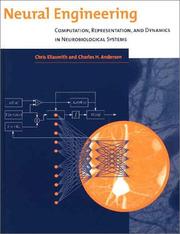
ISBN: 0262050714 Year: 2003 Publisher: Cambridge, Mass. : MIT Press,
Abstract | Keywords | Export | Availability | Bookmark
 Loading...
Loading...Choose an application
- Reference Manager
- EndNote
- RefWorks (Direct export to RefWorks)
Neural Networks (Computer) --- Neural networks (Neurobiology) --- Neural networks (Computer science) --- Computational neuroscience. --- Réseaux neuronaux (Neurobiologie) --- Réseaux neuronaux (Informatique) --- Neurosciences informatiques --- Neural networks (Computer science). --- Neural networks (Neurobiology). --- Réseaux neuronaux (Neurobiologie) --- Réseaux neuronaux (Informatique) --- Neural Networks, Computer.
Book
ISBN: 9783031695308 3031695305 Year: 2024 Publisher: Cham Springer Nature Switzerland :Imprint: Springer
Abstract | Keywords | Export | Availability | Bookmark
 Loading...
Loading...Choose an application
- Reference Manager
- EndNote
- RefWorks (Direct export to RefWorks)
The declared goal of this book, an extended and revised translation of the German edition (2021), is to show how a unified model of the psyche and body can be developed via insights from psychoanalysis, neurology and computer technology. On the one hand, such a model allows for the testing of psychological and social theories on a scientific basis with the help of simulation experiments. On the other hand, the model developed according to the functional structures of the human brain and psyche provides the basis for artificial intelligence systems. These are systems with cognitive capabilities that can save human lives, save energy, ensure safety at airports, provide support in old-age care and in the medical field; in other words and generally speaking, systems that can simplify our lives in a relevant way and on a broad basis.
Artificial intelligence. --- Neural networks (Neurobiology) --- Neural networks (Computer science) --- Brain --- Intelligence artificielle. --- Réseaux neuronaux (Neurobiologie) --- Réseaux neuronaux (Informatique) --- artificial intelligence. --- Computer simulation. --- Intel·ligència artificial --- Xarxes neuronals (Informàtica) --- Xarxes neuronals (Neurobiologia) --- Neurologia --- Psicoanàlisi
Periodical
Abstract | Keywords | Export | Availability | Bookmark
 Loading...
Loading...Choose an application
- Reference Manager
- EndNote
- RefWorks (Direct export to RefWorks)
Nervous system --- Neural networks (Neurobiology) --- Système nerveux --- Réseaux neuronaux (Neurobiologie) --- Mathematical models --- Periodicals. --- Computer simulation --- Modèles mathématiques --- Périodiques --- Simulation par ordinateur --- Computer Simulation --- Models, Neurological --- Neurosciences --- Système nerveux --- Réseaux neuronaux (Neurobiologie) --- Modèles mathématiques --- Health Sciences --- Life Sciences --- Neurology --- Physiology --- Computational Biosciences
Book
ISBN: 3540532676 0387532676 3540468080 Year: 1990 Volume: 368 Publisher: Berlin Springer
Abstract | Keywords | Export | Availability | Bookmark
 Loading...
Loading...Choose an application
- Reference Manager
- EndNote
- RefWorks (Direct export to RefWorks)
Mathematical control systems --- Statistical physics --- Neural circuitry --- Neural networks (Neurobiology) --- Statistical mechanics --- Réseaux neuronaux (Neurobiologie) --- Mécanique statistique --- Congresses --- Congrès --- 536.75 <063> --- -Neural networks (Neurobiology) --- -Statistical mechanics --- -Mechanics --- Mechanics, Analytic --- Quantum statistics --- Thermodynamics --- Circuitry, Neural --- Circuits, Neural --- Nerve net --- Nerve network --- Neural circuits --- Neurocircuitry --- Neuronal circuitry --- Electrophysiology --- Nervous system --- Reflexes --- Entropy. Statistical thermodynamics. Irreversible processes--Congressen --- Neural networks (Computer science) --- Mathematical models --- -Entropy. Statistical thermodynamics. Irreversible processes--Congressen --- 536.75 <063> Entropy. Statistical thermodynamics. Irreversible processes--Congressen --- -Circuitry, Neural --- Réseaux neuronaux (Neurobiologie) --- Mécanique statistique --- Congrès --- Biological neural networks --- Nets, Neural (Neurobiology) --- Networks, Neural (Neurobiology) --- Neural nets (Neurobiology) --- Cognitive neuroscience --- Neurobiology
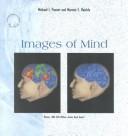
ISBN: 0716750457 Year: 1994 Publisher: New York Scientific American Library
Abstract | Keywords | Export | Availability | Bookmark
 Loading...
Loading...Choose an application
- Reference Manager
- EndNote
- RefWorks (Direct export to RefWorks)
Biological neural networks --- Cognitieve neurowetenschap --- Cognitive neuropsychology --- Cognitive neuroscience --- Nets [Neural ] (Neurobiology) --- Networks [Neural ] (Neurobiology) --- Neural nets (Neurobiology) --- Neural networks (Neurobiology) --- Neurale netwerken (Neurobiologie) --- Neuropsychologie cognitive --- Neuroscience cognitive --- Neurosciences cognitives --- Réseaux neuraux (Neurobiologie) --- Neuropsychology. --- Neural Pathways --- Mental Processes. --- Cognitive neuroscience. --- Brain --- Réseaux neuronaux (Neurobiologie) --- Cerveau --- physiology. --- Localization of functions. --- Localisation cérébrale --- Neuropsychology --- Neural Processes --- Mental Processes --- Localization of functions --- 616.8 --- -Cerebrum --- Mind --- Central nervous system --- Head --- Nets, Neural (Neurobiology) --- Networks, Neural (Neurobiology) --- Neurobiology --- Neural circuitry --- Cognitive science --- Neurologie. Neuropathologie. Zenuwstelsel. Neurologische aandoeningen --- -Neurologie. Neuropathologie. Zenuwstelsel. Neurologische aandoeningen --- Réseaux neuronaux (Neurobiologie) --- Localisation cérébrale --- Brain function localization --- Cerebral localization --- Localization of cerebral functions --- Functional localization --- Neurophysiology --- Phrenology
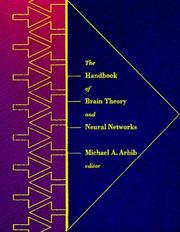
ISBN: 0262011484 9780262011488 0262511029 9780262511025 Year: 1995 Publisher: Cambridge (Mass.): MIT Press,
Abstract | Keywords | Export | Availability | Bookmark
 Loading...
Loading...Choose an application
- Reference Manager
- EndNote
- RefWorks (Direct export to RefWorks)
Neural networks (Neurobiology) --- Neural networks (Computer science) --- Artificial intelligence --- Brain --- Réseaux neuronaux (Neurobiologie) --- Réseaux neuronaux (Informatique) --- Intelligence artificielle --- Cerveau --- Handbooks, manuals, etc --- -#TELE:SISTA --- #KVHB:Neurologie --- #KVHB:Hersenen --- Biological neural networks --- Nets, Neural (Neurobiology) --- Networks, Neural (Neurobiology) --- Neural nets (Neurobiology) --- Cognitive neuroscience --- Neurobiology --- Neural circuitry --- Artificial neural networks --- Nets, Neural (Computer science) --- Networks, Neural (Computer science) --- Neural nets (Computer science) --- Natural computation --- Soft computing --- Handbooks, manuals, etc. --- Neurale netwerken. --- Connectionisme. --- Neural networks (Neurobiology). --- Neural networks (Computer science). --- Réseaux neuronaux (Neurobiologie) --- Réseaux neuronaux (Informatique) --- Computer. Automation --- Artificial intelligence. --- #TELE:SISTA --- Neural networks (Neurobiology) - Handbooks, manuals, etc --- Neural networks (Computer science) - Handbooks, manuals, etc
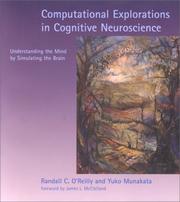
ISBN: 9780262650540 9780262150521 0262650541 0262150522 0262280906 1423737873 9780262280907 Year: 2000 Publisher: Cambridge, Mass. The MIT Press
Abstract | Keywords | Export | Availability | Bookmark
 Loading...
Loading...Choose an application
- Reference Manager
- EndNote
- RefWorks (Direct export to RefWorks)
The goal of computational cognitive neuroscience is to understand how the brain embodies the mind by using biologically based computational models comprising networks of neuronlike units. This text, based on a course taught by Randall O'Reilly and Yuko Munakata over the past several years, provides an in-depth introduction to the main ideas in the field. The neural units in the simulations use equations based directly on the ion channels that govern the behavior of real neurons, and the neural networks incorporate anatomical and physiological properties of the neocortex. Thus the text provides the student with knowledge of the basic biology of the brain as well as the computational skills needed to simulate large-scale cognitive phenomena. The text consists of two parts. The first part covers basic neural computation mechanisms: individual neurons, neural networks, and learning mechanisms. The second part covers large-scale brain area organization and cognitive phenomena: perception and attention, memory, language, and higher-level cognition. The second part is relatively self-contained and can be used separately for mechanistically oriented cognitive neuroscience courses. Integrated throughout the text are more than forty different simulation models, many of them full-scale research-grade models, with friendly interfaces and accompanying exercises. The simulation software (PDP++, available for all major platforms) and simulations can be downloaded free of charge from the Web. Exercise solutions are available, and the text includes full information on the software.
Cognition --- Brain --- Models, Neurological. --- Neural Networks (Computer) --- Neuroscience cognitive --- Simulation par ordinateur --- Processus cognitif --- Neuroscience informatique --- Cerveau --- Réseau neuronal (Biologie) --- Cognitive neuroscience --- Neural networks (Neurobiology) --- Neurosciences cognitives --- Réseaux neuronaux (Neurobiologie) --- physiology. --- Computer simulation. --- #PBIB:2001.2 --- Experimentele psychologie --- denken, begripsvorming en problem solving --- Neural networks (Neurobiology). --- denken, begripsvorming en problem solving. --- Réseau neuronal (Biologie) --- Réseaux neuronaux (Neurobiologie) --- Biological neural networks --- Nets, Neural (Neurobiology) --- Networks, Neural (Neurobiology) --- Neural nets (Neurobiology) --- Cognitive neuropsychology --- Computer simulation --- Neural Networks, Computer. --- Artificial intelligence. Robotics. Simulation. Graphics --- Cognitive psychology --- Neurobiology --- Neural circuitry --- Cognitive science --- Neuropsychology --- NEUROSCIENCE/General --- COGNITIVE SCIENCES/General --- Connexionnisme --- Simulation informatique
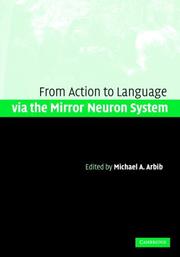
ISBN: 9780521847551 0521847559 9780511541599 9780521182683 0511245947 9780511245947 9780511246630 0511246633 0511242980 9780511242984 0511250940 9780511250941 0511541597 9786610703340 6610703345 0511244487 1107164451 1280703342 0511318693 0511245238 0521182689 Year: 2006 Publisher: Cambridge New York Cambridge University Press
Abstract | Keywords | Export | Availability | Bookmark
 Loading...
Loading...Choose an application
- Reference Manager
- EndNote
- RefWorks (Direct export to RefWorks)
Mirror neurons may hold the brain's key to social interaction - each coding not only a particular action or emotion but also the recognition of that action or emotion in others. The Mirror System Hypothesis adds an evolutionary arrow to the story - from the mirror system for hand actions, shared with monkeys and chimpanzees, to the uniquely human mirror system for language. In this accessible volume, experts from child development, computer science, linguistics, neuroscience, primatology and robotics present and analyse the mirror system and show how studies of action and language can illuminate each other. Topics discussed in the fifteen chapters include: what do chimpanzees and humans have in common? Does the human capability for language rest on brain mechanisms shared with other animals? How do human infants acquire language? What can be learned from imaging the human brain? How are sign- and spoken-language related? Will robots learn to act and speak like humans?
Psycholinguistics --- Artificial intelligence. Robotics. Simulation. Graphics --- Physiology of nerves and sense organs --- Psycholinguistics. --- Neurolinguistics. --- Neuroinformatics. --- Neural networks (Neurobiology) --- Cognitive neuroscience. --- Language and languages --- Neural circuitry. --- Language acquisition. --- Recognition (Psychology) --- Psycholinguistique --- Neurolinguistique --- Neuro-informatique --- Réseaux neuronaux (Neurobiologie) --- Neurosciences cognitives --- Langage et langues --- Réseaux nerveux --- Langage --- Récognition (Psychologie) --- Physiological aspects. --- Aspect physiologique --- Acquisition --- Réseaux neuronaux (Neurobiologie) --- Réseaux nerveux --- Récognition (Psychologie) --- Memory --- Acquisition of language --- Developmental linguistics --- Developmental psycholinguistics --- Language development in children --- Psycholinguistics, Developmental --- Interpersonal communication in children --- Circuitry, Neural --- Circuits, Neural --- Nerve net --- Nerve network --- Neural circuits --- Neurocircuitry --- Neuronal circuitry --- Electrophysiology --- Nervous system --- Reflexes --- Language, Psychology of --- Psychology of language --- Speech --- Linguistics --- Psychology --- Thought and thinking --- Psychological aspects --- Life Sciences --- General and Others
| Listing 1 - 10 of 18 | << page >> |
Sort by
|

 Search
Search Feedback
Feedback About UniCat
About UniCat  Help
Help News
News